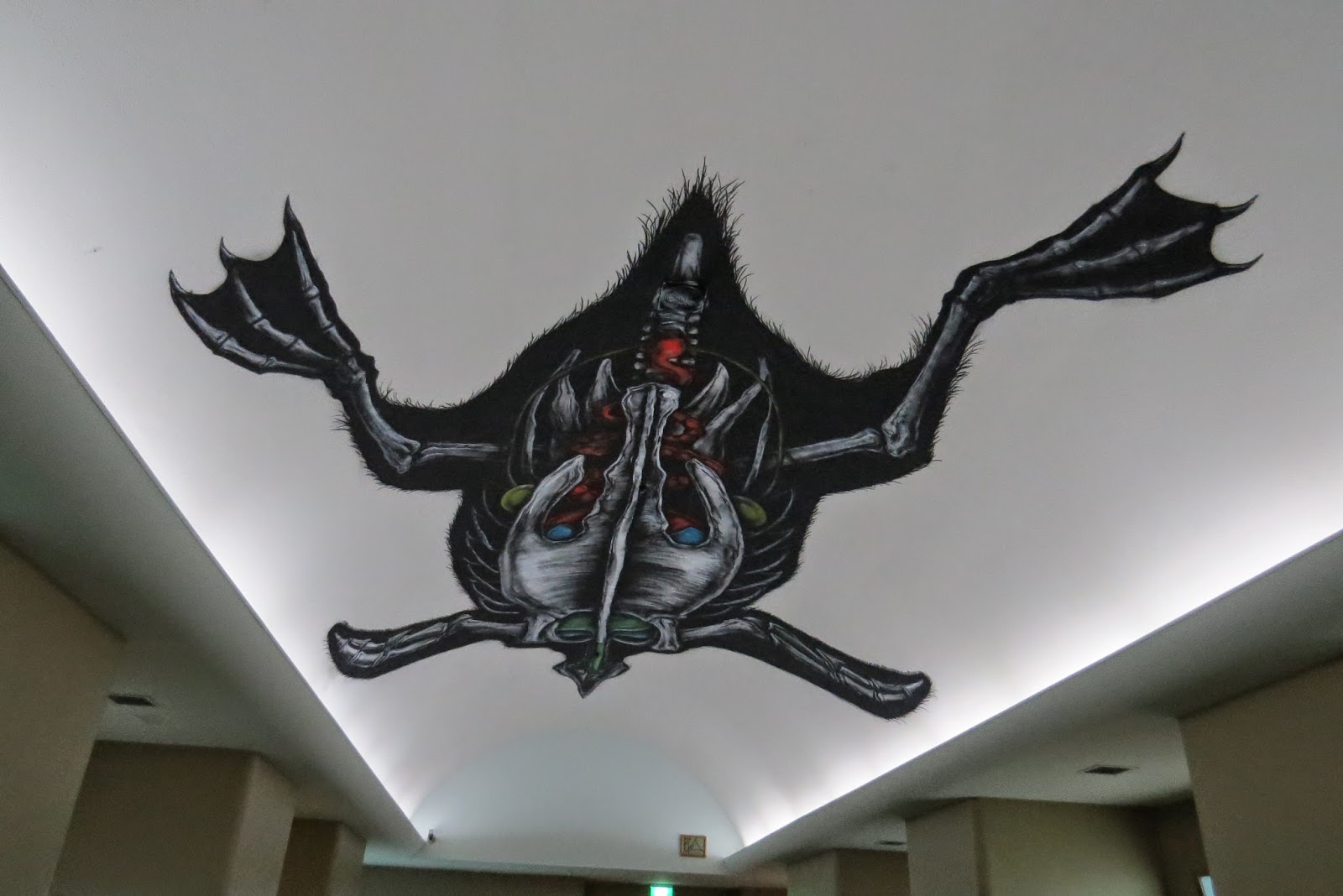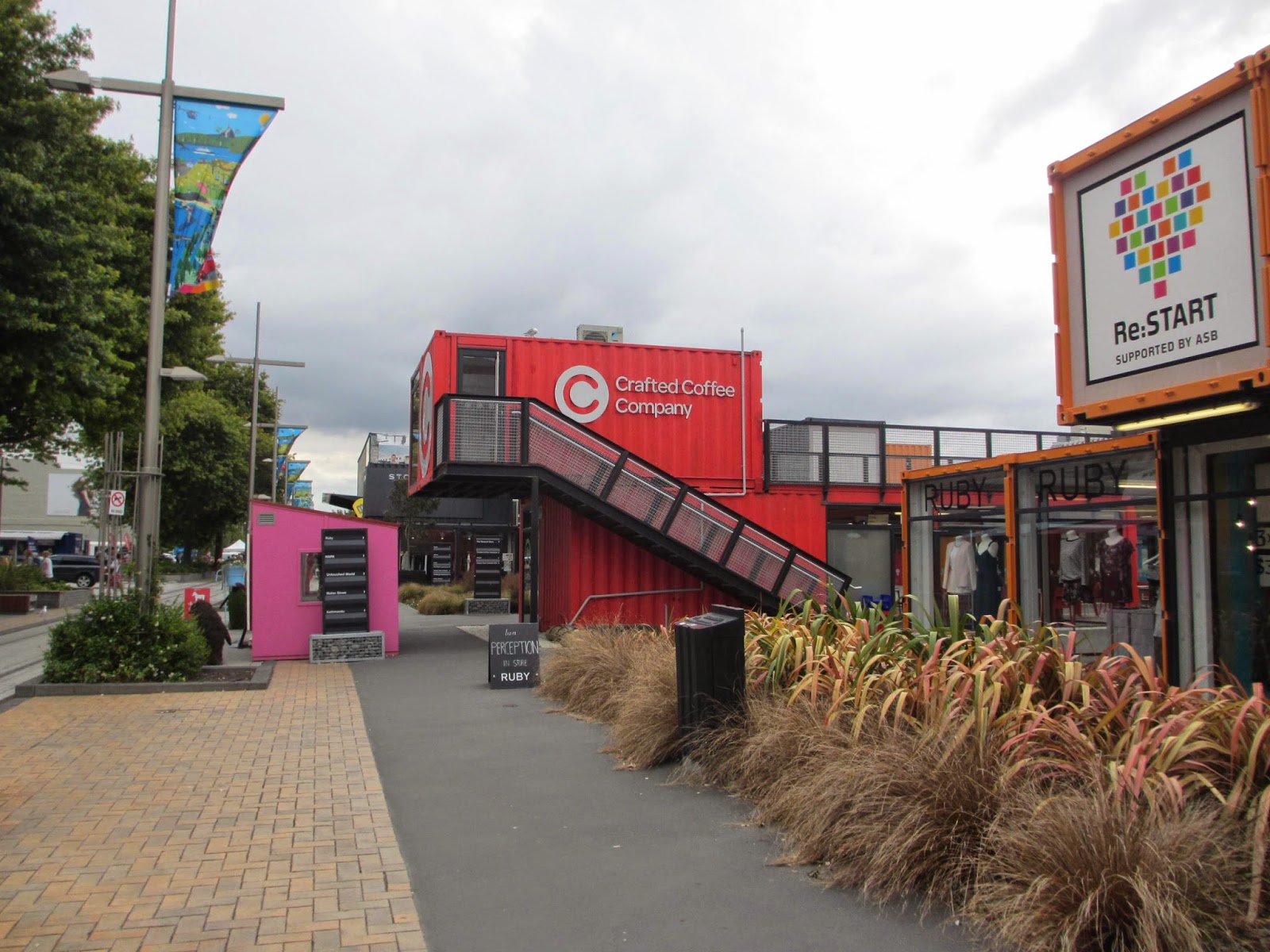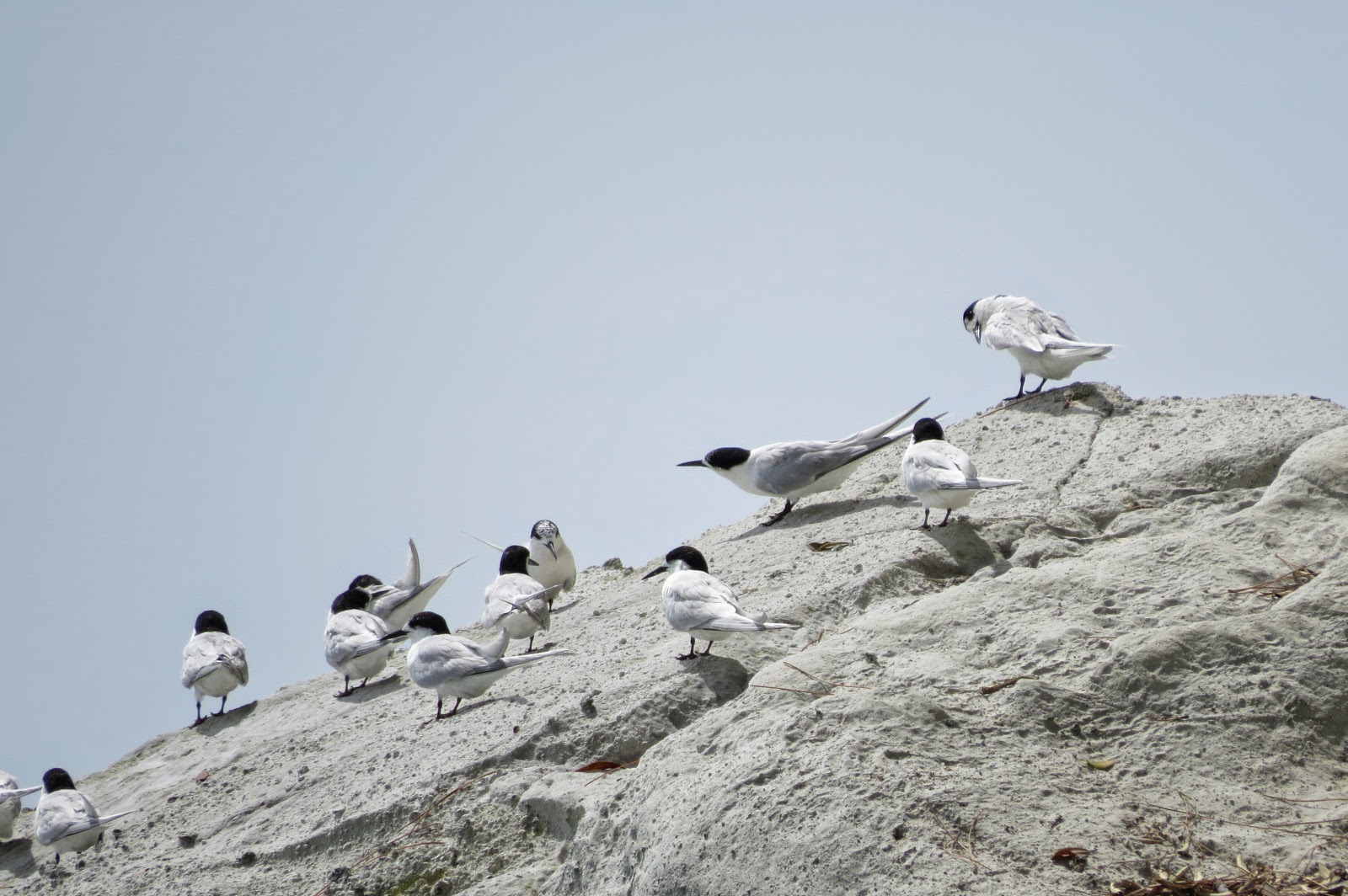Kaikoura was our first South Is destination. We had been here in 1994, the day after a terrible storm had sent seas up into the town.
 |
| Long white cloud over Kaikoura |
Seals were observable but not close-up as on this visit. Many seals were visible at low tide on the rock shelves. Some people ignored signs and actually touched one large seal.
Birds seen there included (in order) , NZ Dotterel, Grey Heron and Variable Oystercatcher.
Travelling south we crossed Waiau River, a rare bird breeding area for Wrybills, Black-billed Gulls and other birds.
We saw Black-billed Gulls in Christchurch Botanic Gardens the next day.
Finally we arrived in Christchurch and enjoyed much time with the main object of our visit, Veronica. She will be 5 years old in May this year. Lisa started work with the Earthquake Authority the day we arrived, but we were happy to look after Veronica on Wednesdays and pick her up from a nearby kindy at 2:30 several days.
They live in Riccarton, a pleasant cosmopolitan suburb close to the city. One of the few remnants of native flora, Riccarton Bush, is nearby, a favourite haunt for Veronica, though she would prefer to play in Deans House rather than walk the fenced-off bush track.

We made many visits to Canterbury Museum and the Botanic Gardens next door in our 2 weeks here. The Museum seems very popular and offers excellent exhibits, including much original Antarctic exploration items, from modified tractors and big snowcats to clothing. The Bird Hall was great - check the ceilings.

Quake City in ReStart Mall is run by the Museum and we found it a powerful evocation of the devastating experience. Their Rebuild Tour added much to our understanding and was conducted very professionally.

The Botanic Gardens were extensive, featuring many huge trees, great floral displays and a small lake.
Christchurch has succeeded in putting a bright face amid the ruins of the central city. Interesting to tourists but locals are not flocking to new or restored commercial ventures, partly because they are tied to leases in other areas and traffic problems as roads are closed for reconstruction. A Festival of Flowers included a viewing point for the ruined Cathedral.
 |
| Viewing point for Cathedral |
 |
| Bodies couchant inside |
 |
| Old shops repaired after quake - customers?? |
Re:Start Mall makes innovative use of shipping containers but at 5pm few people are around.
 |
| Cathedral Junction |

 |
| Resting on our Cathedral Square walk |

We drove east to Lyttleton which surprised us with its very steep streets above the harbour and the earthquake damage not apparent from a distance. Many older homes on stumps fared better than others - easier to repair.
The water views make this area attractive.
 |
| Governors Bay |
We spent a very pleasant long weekend at Lewis Pass with Matthew, Lisa and Veronica. Our accommodation at the motel was very comfortable and the scenery superb. Lewis Pass is about 2.5 hours west of Christchurch and has an elevation around 890m. There are several good walking trails in the area.
 |
| Alfred River |
 |
| Leave no stone unturned |
 |
Tarn on Alpine Walk
|
 |
| Veronica is Little Red Riding Hood |
 |
| But, Mummy, Daniels River isn't too cold |
|
|
|
|
|
|
|
Back in Christchurch we explored the
suburbs, looking for scenery and birds. A booklet on bird-watching
suggested an area at Bexley, where we navigated around road blocks as
roads were under repair. Spent 30 minutes at a swamp before wondering
at the absence of life in adjoining homes, most of which looked new.
Drove around and realised that this suburb was affected badly by the
earthquake (800 homes here were condemned - see an example below).
We also went to Sumner, knowing nothing except that it had a beach. Again, we were shocked by the damage and saw another way in which shipping containers were used - to stop undermined cliffs from falling on roads.

 |
| One of several houses near the church |
At Sumner Esplanade, high school students were not enjoying a surf lesson on land in the bleak weather.
A drive to Banks Peninsula takes about 1.5 hours but was well worth the time. We headed for Akaroa, choosing the longer Summit Road to enjoy the views.
 |
| Looking down to Okains Bay | | | | |
|
|
|
|
 |
| NZ Pigeons are BIG |
 |
| Akaroa Bay |
 |
| Jetty seen from Montgomery Park |
On our last day we took Veronica to the caravan park where we had stayed in a much too Kosy Kiwi cabin. She enjoyed the playground.
We had a wonderful holiday in NewZealand and know there's much more to explore, especially with our lovely Christchurch family.

 We made many visits to Canterbury Museum and the Botanic Gardens next door in our 2 weeks here. The Museum seems very popular and offers excellent exhibits, including much original Antarctic exploration items, from modified tractors and big snowcats to clothing. The Bird Hall was great - check the ceilings.
We made many visits to Canterbury Museum and the Botanic Gardens next door in our 2 weeks here. The Museum seems very popular and offers excellent exhibits, including much original Antarctic exploration items, from modified tractors and big snowcats to clothing. The Bird Hall was great - check the ceilings.
 The Botanic Gardens were extensive, featuring many huge trees, great floral displays and a small lake.
The Botanic Gardens were extensive, featuring many huge trees, great floral displays and a small lake. 





 We drove east to Lyttleton which surprised us with its very steep streets above the harbour and the earthquake damage not apparent from a distance. Many older homes on stumps fared better than others - easier to repair.
We drove east to Lyttleton which surprised us with its very steep streets above the harbour and the earthquake damage not apparent from a distance. Many older homes on stumps fared better than others - easier to repair. 



































































